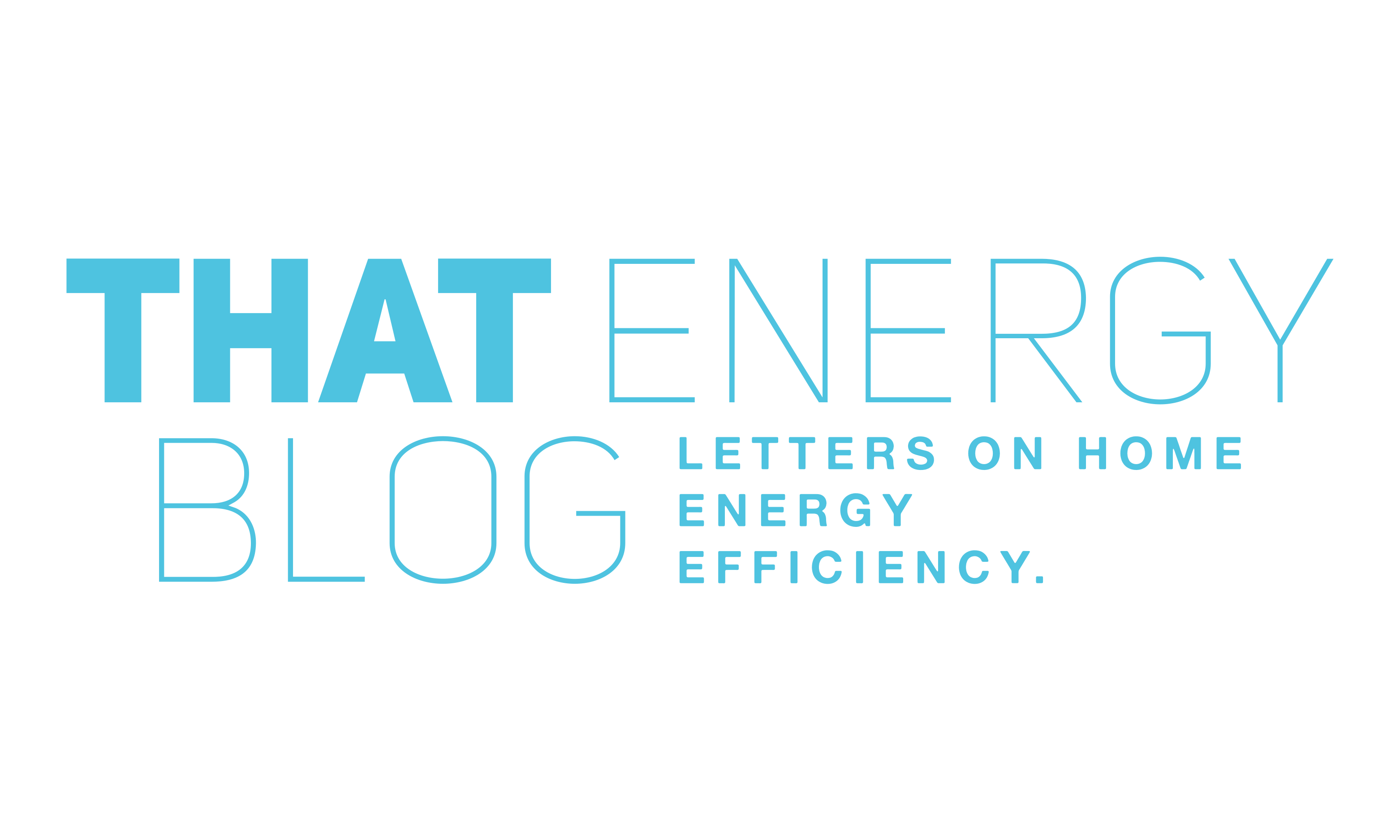- Part 1: An Introduction to Air Source Heat Pumps
- Part 2: Choosing, Installing, Maintaining, and Operating Air Source Heat Pumps
- Part 3: A Deep Dive into the Efficiency Characteristics of Air Source Heat Pumps
Dear Reader:
Let’s navigate the process of selecting the right ASHP for your needs and talk about valuable tips on installation and maintenance.
A Word on Energy Advisors
Registered Energy Advisors, what? A professional residential inspector that has proven knowledge through government testing programs is outfitted with the skills and know-how to assess your home as a system. During a home energy evaluation an energy advisor will produce a report of the as-is energy efficiency of your home and a potential upgraded condition of your home. Therefore you will get solid specific and applicable annual energy savings advice to help you calculate ROIs and make decisions for your comfort, environmental impact, and improve or maintain great air quality.
The advisor will conduct an evaluation of the insulation levels in the basement floor and walls, the rim joist spaces, cantilever floors, above grade walls, windows, doors, and attic. The advisor will also assess the air tightness of your home and using various diagnostic tools (including a blower door setup), identify the leakage areas that can be closed. Included in the evaluation is detailed annual energy usage of heating system, hot water heating, lights, appliances, and consider the contribution of heat from occupants. Finally, existing ventilation capacities and configurations are assessed for adequacy and the ability to function as needed in an upgraded home scenario.
Energy Advisors are non-biased renewable energy experts with regard to your home. Potential for solar power generation, heat pump heating and hot water systems, solar hot water collection, and wind power generation will all be discussed with you.
Not all energy advisors are created equal so here are some quick checks to get what you pay for:
- A background in residential construction may mean the advisor understands the visually hidden aspects of your home.
- Online reviews such as can be found on Google may reveal the quality of previous service delivery.
- An Advisor’s LinkedIn profile will reveal training and education as well as any endorsements made by others – strengthening a referral.
- Request a previous report that has been redacted to protect the homeowner and evaluate their work for yourself.
- Ensure the Energy Advisor works with a Service Organization (SO) accredited by a government agency by calling the SO.
Selecting the Right ASHP
Assess Your Home’s Heating and Cooling Needs
The first step in choosing the right ASHP is to understand your home’s specific heating and cooling requirements. This involves calculating the necessary capacity (measured in BTUs, tons, or kWh – see Part 3: A Deep Dive into the Efficiency Characteristics of Air Source Heat Pumps) based on factors such as your home’s size, insulation, and climate. You may wish to consult a registered energy advisor to help you determine the appropriate approach, configuration, and work with other professionals to determine sizing requirements.
Evaluate Different ASHP Configurations
As we covered in Part 1: An Introduction to Air Source Heat Pumps, there are several ASHP configurations available: central split ducted, mini-split (ductless), and central packaged. Consider the existing infrastructure in your home, such as ductwork, and your preferences for temperature control and aesthetics when choosing the most suitable configuration.
- Existing duct systems and major whole-house renovations usually facilitate a centrally ducted split system.
- Radiator, baseboard, and in floor heat systems may be more suited to ductless systems. A ducted system can be installed on a undeveloped level of the home in addition targeted ductless systems in other areas of the house.
- Progressive installation of smaller systems is okay as it complements your current heating system. You can build-out the heating system over time until it provides near all of the heating you need.
- One room that needs more heating or cooling is best suited for a ductless or central packaged system.
Compare Efficiency Ratings
Compare the efficiency ratings of different ASHP models, including SEER, EER, COP, and HSPF, to ensure you select a system that meets or exceeds the minimum requirements for your region and offers the best performance and energy savings (see Part 3: A Deep Dive into the Efficiency Characteristics of Air Source Heat Pumps). It’s also advised to select a system in which all component model numbers are listed together as a “system” on the AHRI directory (https://ahridirectory.org), to ensure ratings are vetted.
Research and Select a Reputable Brand and Installer
Take time to research various ASHP manufacturers and their product lines, read customer reviews, and consult with professionals. It’s also essential to choose a reputable and experienced installer, as proper installation is crucial for optimal performance and longevity.
Compare preferred models and their component model numbers on rebate and financing directories offered by federal, provincial, municipal, and utility groups such as the Canada Greener Homes Program (https://oee.nrcan.gc.ca/pml-lmp/index.cfm?action=app.search-recherche&appliance=ASHP1_GH) or the United States Inflation Reduction Act climate initiatives (https://www.whitehouse.gov/cleanenergy/#:~:text=in%20the%20summer.-,In%202022,air%20conditioners%20cannot%20exceed%20%24500.)
Installation Tips
Proper Sizing and Location
Ensure your ASHP is correctly sized for your home and installed in a location that allows for adequate airflow, minimal noise, and easy access for maintenance. The outdoor unit should be placed on a stable, level surface, preferably elevated to avoid snow accumulation in colder climates, and protected from wind exposure.
Insulation and Air Sealing
To maximize the efficiency and comfort provided by your ASHP, it’s crucial to ensure your home is well-insulated and air-sealed. Addressing these issues will help reduce heat loss and drafts, allowing your ASHP to perform at its best. A Registered Energy Advisor can make quick work of creating this to-do list when you schedule a home evaluation.
Ductwork Inspection and Upgrades
If you’re installing a central split ducted or central packaged ASHP, have your ductwork inspected and upgraded if necessary. Properly sized and sealed ducts are essential for efficient air distribution and overall system performance.
Maintenance Tips
Regular Cleaning and Filter Replacement
Keep both the indoor and outdoor units clean and free of debris (such as poplar fluff!) to ensure optimal airflow and efficiency. Regularly check and replace filters according to the manufacturer’s recommendations to maintain indoor air quality and prevent strain on the system.
Annual Professional Inspections
Schedule annual inspections with a qualified technician to ensure your ASHP is functioning correctly and efficiently. This will help identify and address any potential issues before they become costly problems.
Protect Your Outdoor Unit
In cold climates, consider installing a protective “cover” or shelter for your outdoor unit to shield it from snow, wind, and ice buildup, which can affect performance and efficiency. A fence combined with the eave of a house is usually all you need.
Operating
Neep.org (Northeast Energy Efficiency Partnerships) has a neat and tidy two page consumer guide revealing how to maximize the use of your heat pump. The key points can be found below the link.
Neep.org – Getting the Most Out of Your Heat Pump
“Your cold-climate heat pump can save a lot on heating and…
- Try to keep thermostat settings steady.
- Big swings in temperature are called deep setbacks.
- Avoid turning the unit on and off to control the temperature. Turn it off for longer periods of time that no heating or cooling is needed.
- Set it and forget it approach.
- Drying the air in humid summer climates is primary to using the cool function.
- Electricity bills increase significantly at first, but gas, oil, or propane reduced in the long run.
- Don’t use the “auto” setting on the thermostat.
- Set the fan to “auto” rather than “on” or “continuous” to save electricity.
- Keep ductless air vanes open wide.
- Much much more…
Choosing the right air source heat pump, along with proper installation and maintenance, can significantly impact your home’s comfort, energy efficiency, and overall cost savings. In our next and letter we will dive deeper into the efficiency characteristics of ASHPs, exploring metrics like SEER, EER, COP, HSPF, HSPF regions, capacity, and cut-off temperature. This information will further empower you to make informed decisions about your home’s heating and cooling systems.
In the meantime, we encourage you to continue researching and consulting with professionals to ensure that you choose the best ASHP for your specific needs and climate. Remember, a well-informed decision is the foundation of a comfortable and energy-efficient home.
Related
Part 2: Choosing, Installing, Maintaining, and Operating Air Source Heat Pumps
Matt Ingvardsen
Related posts
Weekly Updates
* You will receive the latest news and updates on new letters.




